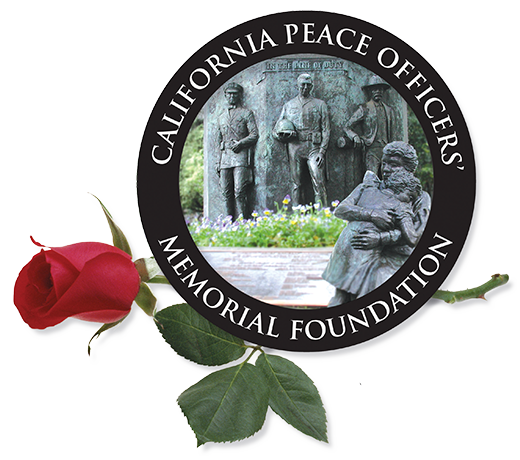Los Angeles County Reserve Deputy Sheriff Constance Worland, 39, was accidentally shot and killed by her partner while they were responding to an assault with a deadly weapon call in Carson on May 2, 1981. She became the first and only (known) woman reserve officer in the U.S. to die in the line of duty.
Around 4:00 p.m. on Saturday, May 2, 1981, Worland and her partner, Deputy Phillip James Strenkowski, 28, a five-year veteran, were about to go on P.M. patrol when they received a “man with a gun” call, inside a condo complex. Before they left Worland placed four rounds into the Ithaca Model 37 shotgun, and the weapon was placed in the floorboard rack.
When the deputies arrived at the location, another deputy with a shotgun was going up a walkway and Worland exited with her service revolver drawn. Strenkowski took the shotgun from the patrol vehicle and joined the other officers. When a garage door suddenly opened, everyone turned toward it and Strenkowski charged the shotgun by manipulating the pump action. It turned out to be a tenant, however, the bleeding victim of the “245” came to the deputies and they were directed to where the suspect was.
Strenkowski, leaving the safety off and the weapon charged, placed the shotgun in the rack and drove to the location, which is around the corner from the first location. When they arrived he asked Worland if she wanted the shotgun, she declined and began exiting the passenger door of the vehicle. Strenkowski reached for the latch on the shotgun holder, trying to avoid Worland’s helmet that she let on the floorboard. He grabbed the shotgun and heard the sound of a gunshot. Believing one of the other deputies or the suspect had fired the shot, he looked at Worland. She was outside the vehicle with her back to him, she turned facing Strenkowski and he observed a pained expression on her face. Worland slumped to the ground and it was at this instant Strenkowski realized he had accidentally shot his partner.
Worland was transported to Harbor-UCLA Medical Center and was rushed into surgery. She regained consciousness but died two hours after arriving at the hospital of massive internal bleeding caused by the gunshot wound in her back.
Strenkowski, 28, was not charged since an investigation by the homicide bureau of the Los Angeles County Sheriff’s Department concluded that the shooting was an accident. Investigators later had him recreate his exact movements and conducted several tests. The simulations demonstrated that the shotgun discharged when it struck the steering column as it was being removed from the vehicle.
Worland was born Constance Ellen Gunn on Oct. 30, 1941, in Toledo, Ohio to Ashley and Janet Gunn. She was raised in Toledo, Ohio but moved to Glendora with her mother in the mid-1950s. She graduated from Baldwin Park High School in 1960 where she was active as a majorette and in the choir.
Worland became a reserve officer on Jan. 16, 1977, and completed 400 hours of training with Reserve Class 44. She was first assigned to the downtown Metro division before being assigned to the Carson station in 1978.
Sgt. Jack Ryan, the reserve coordinator at the Carson station, noted, “As often as we asked her to work, she volunteered even more. She was a fantastic person.”
Worland wanted to be a full-time deputy sheriff “but her age was against her.” (She was 36 when she became a reserve and a full-time deputy had to complete training and join the force before reaching 35).
On March 13, 1978, she was hired for full-time work as a communications systems operator (i.e., dispatcher) for the Los Angeles County Sheriff’s Office at the communications center in East Los Angeles. However, she continued to work as a reserve officer in her off-duty hours.
The family declined a police funeral and thus Worland’s service was held without the traditional police honors. In respect for the family’s wishes for a “non-military” funeral, the numerous police officers that attended the service wore civilian attire.
Since Worland’s nickname was “Sunshine” and her favorite color was yellow, the police cars parked outside the church had yellow ribbons fluttering from the antennas. Also, many of the mourners at the service wore yellow ribbons and the casket was decorated with a “star-shaped badge of yellow flowers.”
Pastor Dave Miller told the mourners that Connie was “extremely dedicated” to her work as a dispatcher and as a volunteer reserve officer. He noted that “It was more than a job to her, it was a calling.” As a dispatcher “She was more than good, she was one of the best” and as a reserve she “Had great respect not only from the other reserves but from the regulars as well.” On a personal level, Miller described Connie as “A contagiously happy person (thus the nickname, “Sunshine”) who had a real joy.”
After the funeral service, a procession of 50 police cars led mourners from the church to Forest Lawn Memorial Park in Cypress. Red fire engines were parked at several intersections along the way, and firemen stood in front of them, their hands over their hearts. A police helicopter flew above.
At the grave the minister presented a yellow rose to each of deputy Worland’s daughters and then the three girls stood, joined hands, and walked to the pink casket. One by one, they placed the yellow roses on top of the coffin.
Besides her parents, Worland was survived by her three daughters, Elaine, 20, Linda, 17, and Denise, 16; and brother, Byron “Mike” Gunn.
